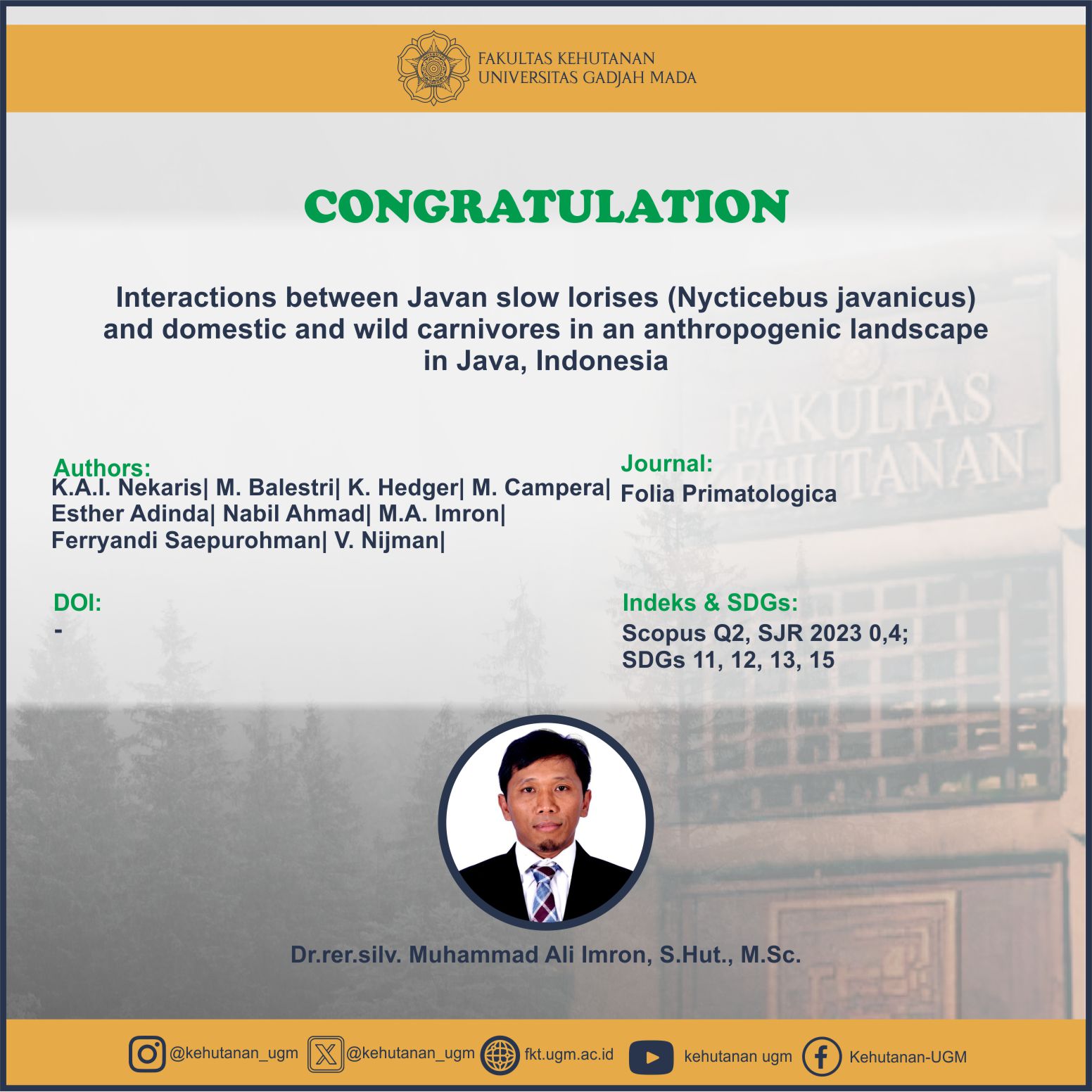
Abstract
With increasing replacement of native forests with agriculture, it is important to understand the factors allowing non-human primates to persist, including interactions with potential predators. For small-bodied nocturnal primates, smaller carnivores and domestic dogs that often characterise agroforestry landscapes may be a particular threat, especially for primates like slow lorises, which rely on canopy connectivity and are particularly vulnerable on the ground. We present data collected over 12 years in Indonesia. During a long-term study on Javan slow lorises, we used ad libitum sampling to record 703 instances of slow lorises in proximity to wild small carnivores (Javan palm civets, small Indian civets, Sunda leopard cats, Javan ferret badgers) and interactions with small carnivores (62) and domestic dogs (58) respectively. Most of these interactions were neutral or affiliative, including sharing canopy bridges and sleeping sites. Two negative interactions occurred between lorises and wild carnivores; five potential predation events were linked to dogs. Lorises were less active and more vigilant when carnivores were present. A WhatsApp® group facilitated data collection, increasing detail of observations, especially on interactions with domestic dogs. We saw an overall decline in small carnivores, especially nearer to the village, which could be linked to competition with domestic dogs. A better understanding of the role of dogs in this changing landscape is vital.
SDGs:
SDG 11:Sustainable Cities and Communities
SDG 12:Responsible Consumption and Production
SDG 13:Climate Action
SDG 15:Life on Land
Link Dokumen:
Download
